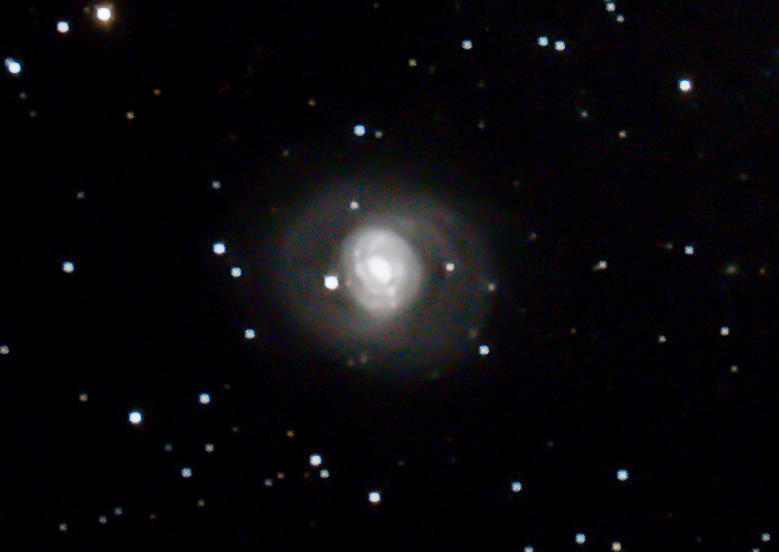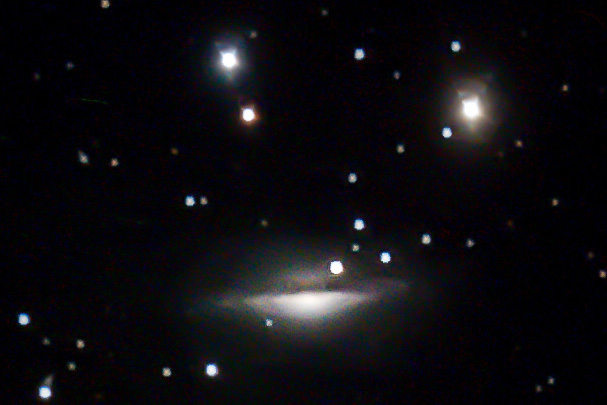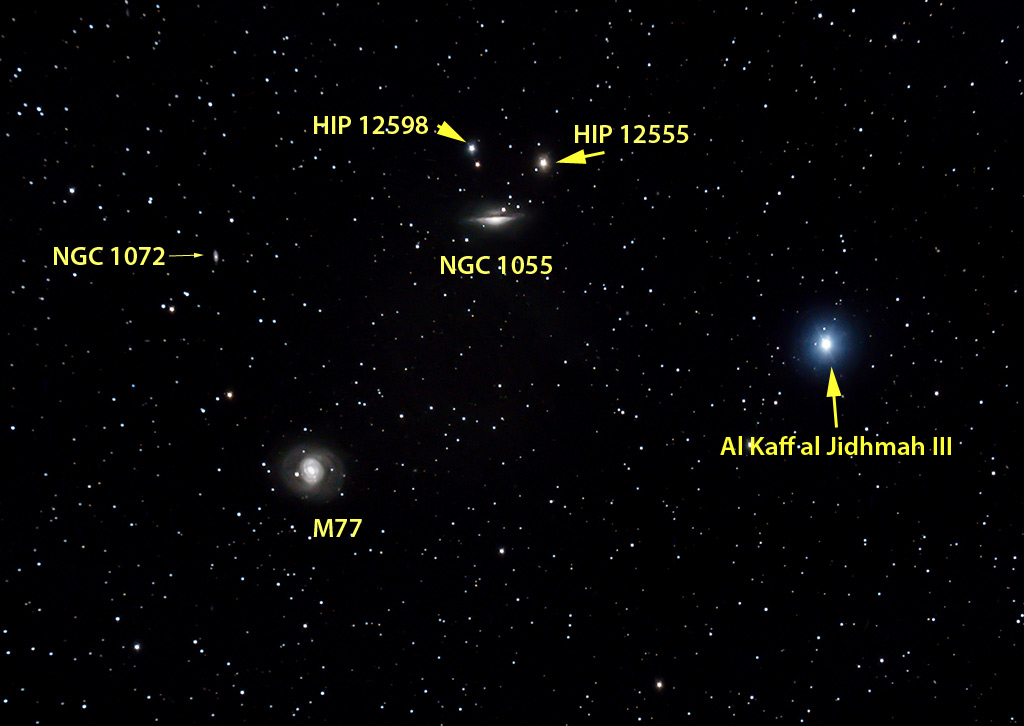

Back to Main > Back to Galaxies
M77 (aka. NGC 1068)
Apparent Magnitude: 9.6
Distance: Aprox: 47 million light-years
Constellation: Cetus
Diameter: 170,000 light-years
Number of Stars Approx: Greater than 300 billion
Messier 77 is one of the largest galaxies included in the Messier catalogue. It is classified as a type 2 Seyfert galaxy and is the brightest galaxy of this type in the sky. Named after the American astronomer Carl Seyfert, who was the first to identify the class in 1943, Seyfert galaxies are characterised by hot, highly ionised gas around an extremely active centre. M77 serves as the protoype for the class. Messier 77 is also the nearest Seyfert galaxy to the solar system, and one of the most studied galaxies in the sky. Classified as a barred spiral, M77 has loosely wound spiral arms, dotted with countless star forming regions, and a small central bulge.
The best time of year to observe M77 is during the autumn.
The separation between NGC 1055 and M77 is about 442,000 light-years.
-----------------------------------
NGC 1055
Apparent Magnitude: 11.4
Distance: Aprox: 52 million light-years
Constellation: Cetus
Diameter: 115,800 light-years
NGC 1055 is an edge-on spiral galaxy. The spiral arm structure appears to be elevated above the galaxy's plane and obscures the upper half of the bulge. Discovered on December 19, 1783 by William Herschel from his home in Slough England.
Taken 12/12/18 in Grand Rapids Ohio by Russell Kille on a CPC 1100 with Hyperstar @ F2 and ZWO ASI294MC Pro camera


